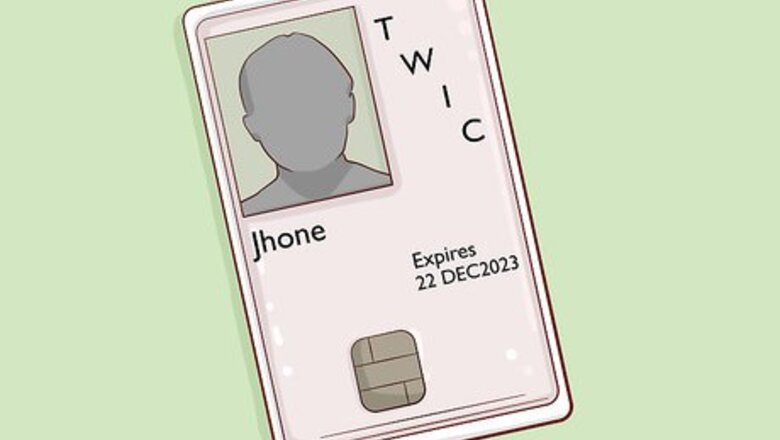
views
Meeting Basic Requirements
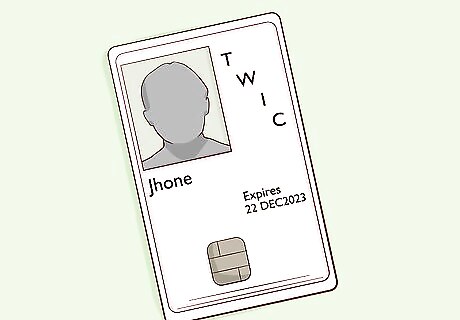
Obtain a TWIC card so you can legally work on a dock. TWIC (Transportation Worker Identification Credential) cards are required by the Maritime Transportation Security Act for anyone who works in secure maritime facilities and vessels in the USA. Apply online or fill out an application at an application center, then schedule an appointment to provide all the required documentation and pay the fee.Tip: You can find all the necessary information to complete the TWIC application process at https://www.tsa.gov/for-industry/twic. To be eligible for the TWIC, you must be a U.S. citizen, a lawful permanent resident, a naturalized citizen, a nonimmigrant alien, an asylee, or a refugee in lawful status. You must also be at least 18 years old. The TSA will conduct a criminal background check and threat assessment before issuing you the credential. You will be disqualified for providing any false information or if you have a background of certain disqualifying criminal offenses. The fee for a TWIC card as of August 2019 is $125.25 USD. You are eligible for a reduced fee of 105.25 if you have a hazardous materials endorsement on your driver’s license or a Free and Secure Trade card.

Get in shape to meet physical requirements for a longshoreman job. The work of a longshoreman is strenuous and can be dangerous, as you will be loading and unloading cargo. All longshoremen must pass physical examinations for strength, agility, and balance to show they are fit enough to do the job. You can train with weights, do cardio exercises, and perform agility drills to get stronger and improve your agility and balance.

Avoid using drugs. Both new longshoremen and longshoremen looking to advance in the ranks have to pass drug tests to show they are drug-free. This is a safety issue as longshoremen are responsible for handling large, potentially dangerous cargo and operating heavy machinery that could cause injury to themselves or others if they are impaired. It’s OK if you have a past history of drug use, as long as you are currently clean. Drug offenses are not a disqualifying criminal offense for obtaining a TWIC card either. If you are currently a drug user, you need to quit drugs before you begin the process of becoming a longshoreman. Consult a drug and alcohol hotline or your doctor to make a plan for quitting. You may want to consider a rehab program if your habit is out of control and you don’t think you will be able to quit on your own.
Joining a Longshoreman’s Union
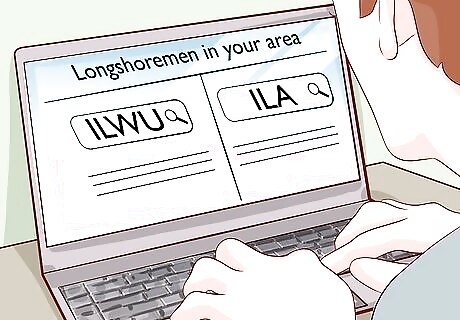
Determine which labor union employs the longshoremen at your local port. Along the west coast of the U.S., this is likely to be the ILWU (International Longshore and Warehouse Union), while the prominent union along the east coast is the ILA (International Longshoremen's Association). Search online or call your local port to find out which union represents longshoremen in your area. Keep in mind that joining a longshoremen’s union is not easy to do. These unions do not have open enrollment and you often need to know another member to get in or wait years to be accepted.

Call your local longshoremen’s union and ask about job opportunities. Your local union will be able to provide you with specific information about how to start working with them and work your way towards membership. They will tell you if there is “casual” work available, which means dock work for non-members, and what the process for getting assigned open shifts is.Tip: Due to the competitive nature of longshoreman jobs, you will have to be very persistent in contacting the union and trying to get casual work. However, keep in mind that there are many other maritime career paths out there that you can pursue as an alternative to being a longshoreman. The first step to becoming a union-affiliated longshoreman is to start working with them as a casual dock worker. Through working as a casual, you will start to build up hours of experience that will eventually let you apply to become a union member. The availability of casual work greatly depends on the union in your area. Some unions may not have any work at all for non-union members, so don’t expect to just call up your local union and start working right away.

Go to the union hiring hall or the docks and wait in line for casual shifts. The union will instruct you where you have to show up to wait in line if there are available casual shifts. Go each day that there is work available and see if you get called for a shift. Keep in mind that you might go home without getting called because more senior casual workers are given priority. Full union members are always given the first priority over shifts, then casual workers are given priority in order of seniority.

Gain enough experience to achieve "identified casual" status. You will eventually be recognized by the union as an identified casual and given an ID card if you remain persistent in seeking casual dock work and work a certain number of hours. This does not make you a union member, so you will still be behind union members in seniority. However, you are now given preference over non-ID casuals when work is assigned. Your local union will be able to inform you what the required numbers of hours are to achieve identified casual status. Some casual workers spend 10 years or more working up to identified casual status, and even longer to become full union members. As you work your way towards identified casual status, try to network with union members and make some connections. This can improve your odds of getting accepted when you apply for union membership in the future.

Apply for union membership when they are accepting applications. You can apply for membership in the union once you become an identified casual. The union will distribute applications when they are seeking to expand their membership, and the process is generally very competitive. You may have to apply several times before being accepted. Once accepted into the union, your schedule will become more reliable and flexible, as you are now given preference over casual workers. Union members are full-fledged longshoremen and receive benefits from the union for life.
Pursuing Alternative Maritime Careers

Call your local port and ask about non-unionized jobs at the docks. Some ports have other dock worker positions or other types of jobs available to people who are not members of a longshoremen’s union. Call the port and ask if they have any such jobs available and how you can apply for them. You can also check online to see if your local port has a job board where they post openings or any other information about jobs available at the docks.
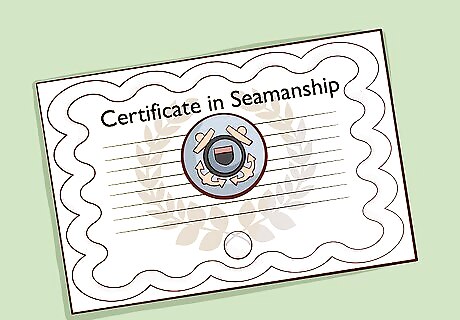
Get a maritime-related education if you can’t get work at a local port. There are many maritime-focused programs available at community colleges and other educational institutions. Enroll in a program that interests you to open up doors to a different career in a maritime field as an alternative to being a longshoreman.Tip: If you don't live in a big port city, there might not be these types of programs available in your area. Consider moving to an area with a large port and strong maritime industry if you are passionate about a maritime career. For example, you could study maritime science or get a certificate in seamanship or vessel operations. A degree or certificate in these types of programs can make you a candidate for a variety of maritime jobs, including with government organizations such as the coast guard.
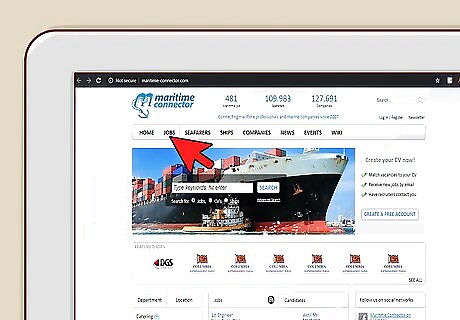
Apply to other maritime jobs you are qualified for. Search online and look in local classifieds for job openings in maritime fields. Apply for any that you are interested in and for which you meet the educational and professional requirements. If you have completed an education in a maritime-related field, then network with any connections you have from the program to hunt down job opportunities. For example, professors who taught you might be able to provide you with leads on where to look for jobs or even put you in contact with someone who is hiring. Examples of other maritime jobs include working on a port management team, working for a shipping company, being a marine surveyor, or even working as a marine technician. There are all kinds of maritime jobs both onshore and on vessels.
















Comments
0 comment